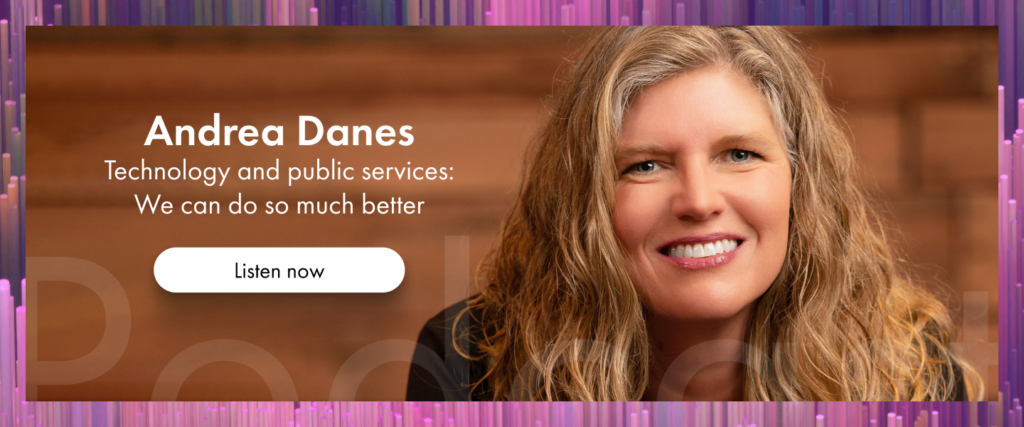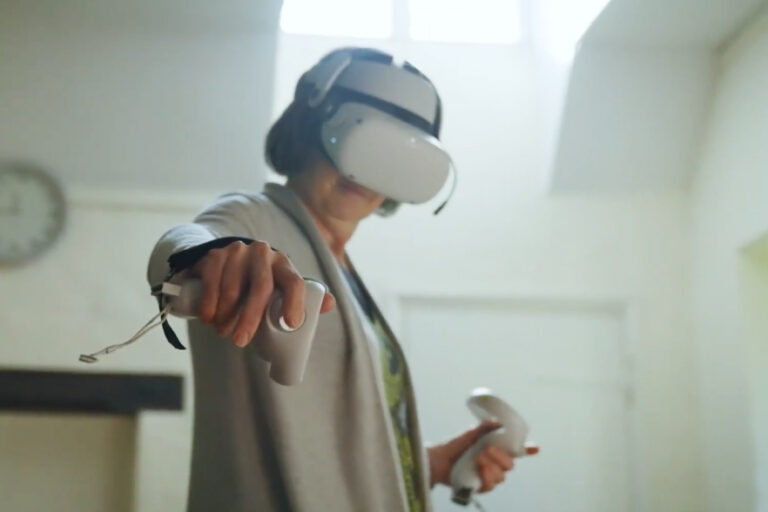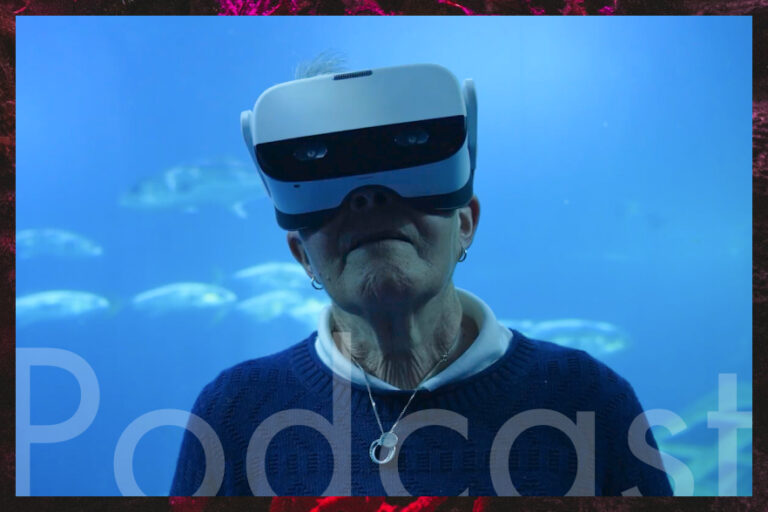
In the realm of public service, a quiet revolution is underway.
It’s a shift towards integrating technology into the very fabric of government operations, aiming to make them more efficient, accessible, and attuned to the needs of the people they serve.
Experts like Andrea Danes, Global Human Services Leader at EY, are at the vanguard of this movement, advocating for a future where technology and human services converge to better address societal vulnerabilities.
Joining us on the Tech for Good podcast, Andrea brings an authority to the subject born of both personal and professional experience.
The public sector’s journey toward technological integration is marked by a series of challenges. Outdated systems, constrained budgets, and an overextended workforce often clash with the potential offered by emerging technologies. The excitement surrounding innovations like generative AI is tempered by the realities of slow adoption rates and bureaucratic red tape. Yet, the drive to modernise public services persists, fuelled by the promise of what technology can achieve when thoughtfully applied.
A key principle in this transformation is the shift from reactive to proactive public assistance. The traditional model, which waits for crises to occur before responding, is giving way to a more preventative approach. This paradigm shift is not only more compassionate but also more cost-effective. It underscores the need for governments to anticipate and address potential issues before they escalate, thus reducing the long-term burden on public resources.
However, transitioning to this proactive model is not without its obstacles. Budgeting practices and policy frameworks are often entrenched in a reactive mindset, making it difficult to reallocate resources towards preventative measures. Additionally, heavy-handed procurement laws and rules can hinder the timely adoption of new technologies, delaying their benefits and sometimes rendering them obsolete upon implementation.
Despite these hurdles, there is a growing recognition of the value of agile methodologies and pilot projects within the public sector. These approaches allow for incremental testing and refinement of new technologies, providing valuable insights without the commitment of a full-scale overhaul. They represent a nimble strategy that can lead to significant breakthroughs in a sector known for its rigidity.
One illustrative example of technology’s potential to effect change is an EY project in Maidstone, UK. There, data and predictive analytics are employed to identify individuals at risk of homelessness, enabling caseworkers to offer proactive support. This initiative has led to a significant reduction in new instances of homelessness, demonstrating how technology, when coupled with human insight, can have a profound impact on community well-being.
The role of technology in public service is multifaceted. It’s not just about automating tasks or digitizing records; it’s about reimagining how services are delivered. Technology can streamline processes, reduce redundancies, and provide a more holistic view of the individuals served by various government programs. It can also facilitate better decision-making by providing real-time feedback and learning tools for caseworkers, enhancing their ability to serve effectively.
As the population ages and the demand for services grows, the need for efficient and effective public service delivery becomes more acute. Technology offers a way to bridge the gap between the services required and the workforce available to deliver them. It’s not about replacing human workers but augmenting their capabilities, reducing the administrative burden, and allowing them to focus on the impactful, human aspects of their roles.
The principles of human-centric design, persona development, and journey mapping are gaining traction as methods to restructure public services around the needs of the individual. These principles are not just theoretical; they are practical tools that can lead to more efficient government operations and better outcomes for the people served.
The drive to modernise public services through technology is not just a professional endeavour; it’s a moral imperative. It’s about leveraging the tools of our time to create a society that is more equitable, compassionate, and responsive to the needs of its citizens.
As experts like Andrea continue to champion these principles, their voices serve as both a guide and an inspiration for the transformative journey ahead.




